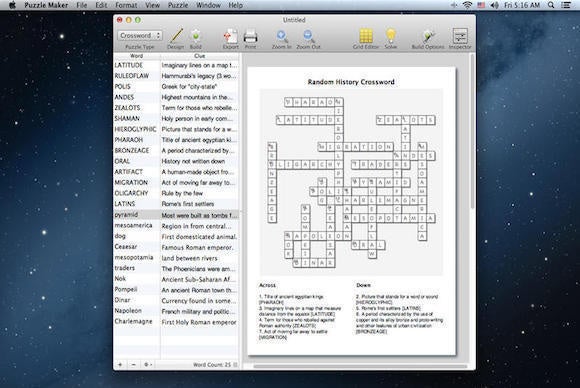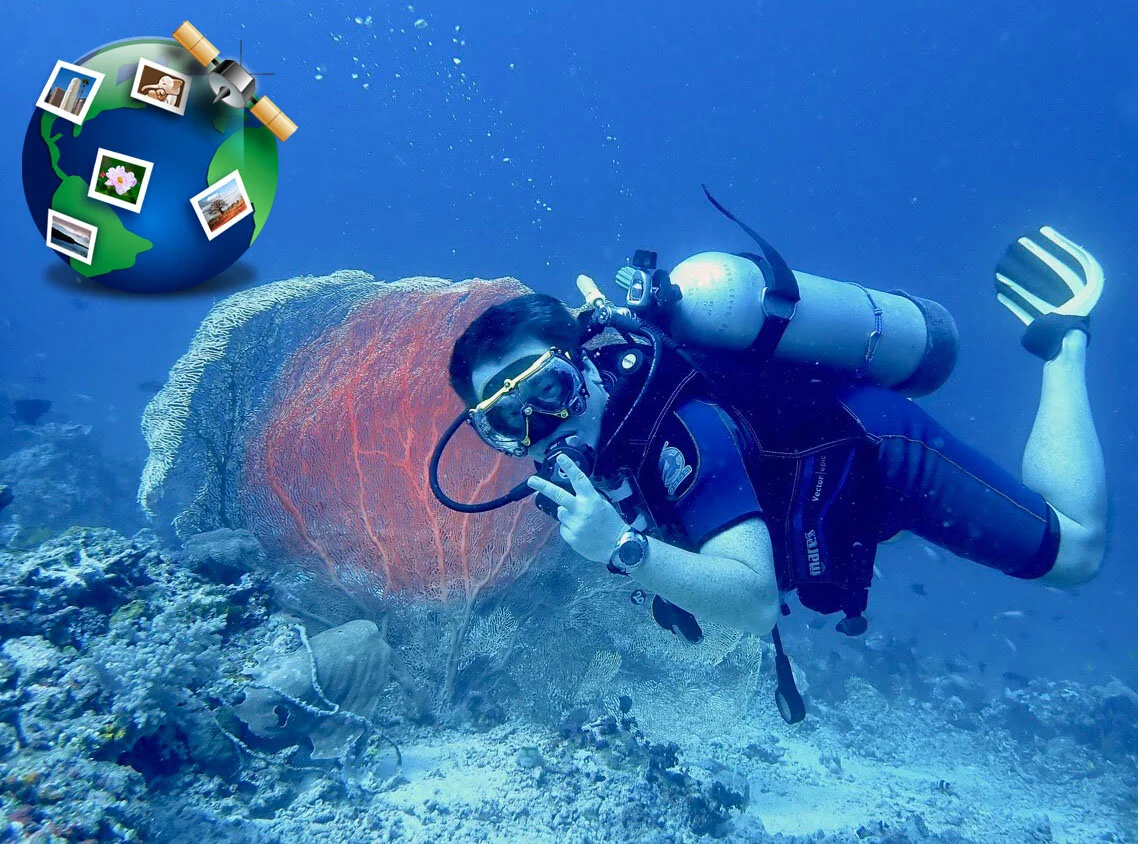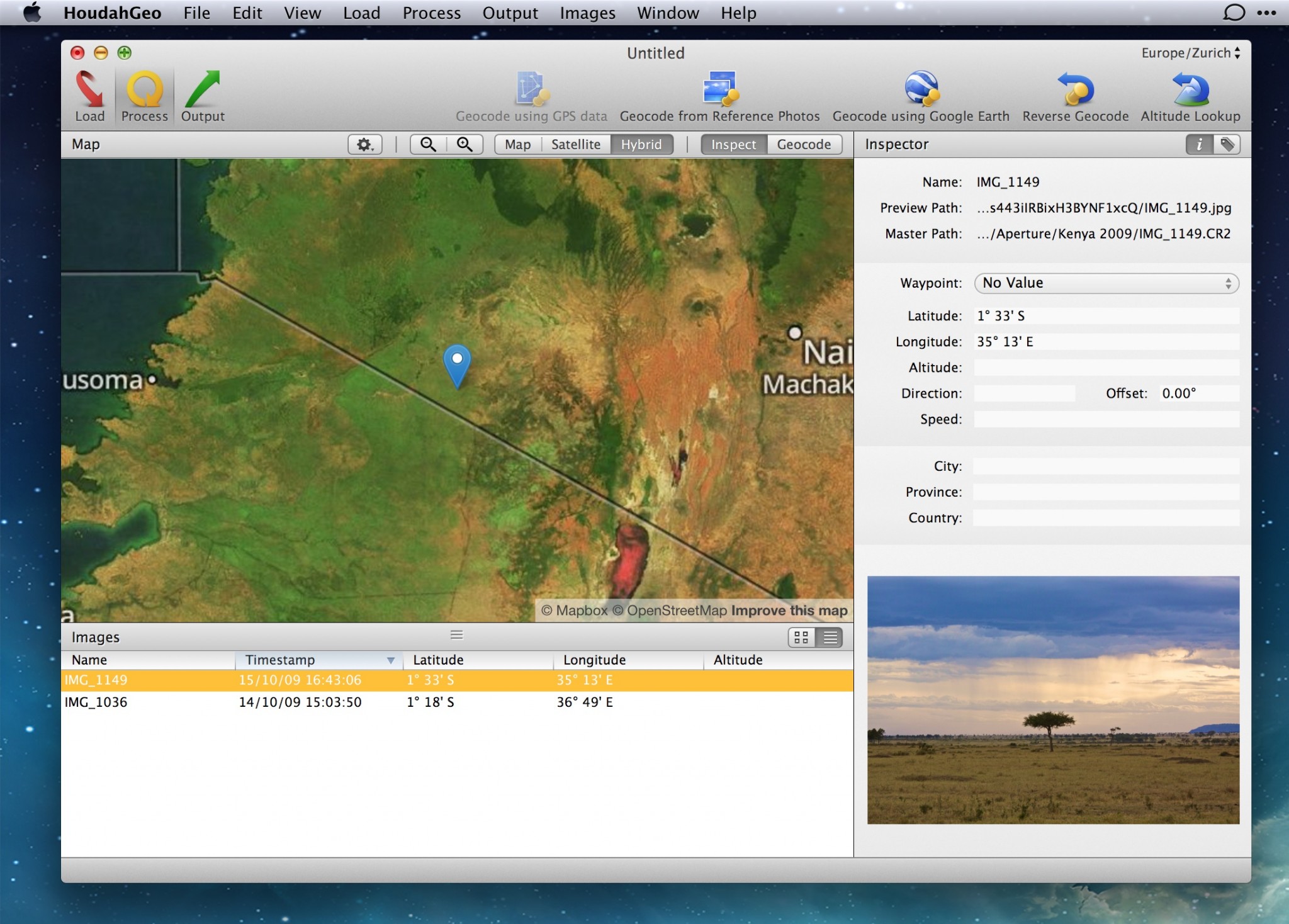 Houdah Software announces HoudahGeo 6.0, a major upgrade to their photo geotagging tool for macOS.
Houdah Software announces HoudahGeo 6.0, a major upgrade to their photo geotagging tool for macOS.Today marks the release of HoudahGeo 6. While Apple has geo-location support in Photos, it often feels more like an after-thought. HoudahGeo 6 is an entire app dedicated to simplifying adding geo-location data to your photos. There are a lot of nice features with the update: Support for JPG+RA. HoudahGeo 5 is an application that streamlines adding location and other metadata to your files. The best part is that it writes that information to the files themselves instead of the library's catalog. HoudahGeo stores latitude, longitude and altitude as geotags right within the image file. Just like a GPS-enabled camera. HoudahGeo supports many methods of geocoding, ranging from automatic to manual. Drivers elgato sound cards & media devices. Use a GPS track log, reference photos taken with iPhone, or pick locations on the built-in map.
Here the press release:
Luxembourg - Houdah Software today is proud to announce HoudahGeo 6.0, a major upgrade to the photo geotagging tool for Mac. HoudahGeo tags photos with location coordinates, names, and related metadata. It's been 4 years since the release of HoudahGeo 5.0. We invested a significant part of that time into the file search tool HoudahSpot. This work has allowed us to release a major upgrade in the spring of 2019. After that release, we turned our attention to HoudahGeo.
The long release cycle allowed for many ideas and feature requests to pile up. It took almost a year to turn these ideas into HoudahGeo 6.0. At the end of the process, an exceptionally large upgrade has emerged. HoudahGeo 6.0 brings several major new features and countless enhancements that streamline many tasks in the geocoding workflow.
Customers will be glad to see HoudahGeo 6.0 support JPEG RAW pairs. Many digital cameras can save two versions of the same image. One JPEG file and one RAW file. HoudahGeo recognizes such pairs and handles them as a single photo. HoudahGeo will write the same metadata to both files.
Our #1 feature request, however, was to allow specifying the timezone used to write dates and times to EXIF/XMP metadata. Many forget to set their camera clock when traveling across time zones. As a result, photo metadata can show times that appear to be hours off. HoudahGeo users can now have HoudahGeo write dates and times using a time zone that will make times appear more natural or correct.
HoudahGeo 6.0 can help with migrating away from Apple Aperture and generally future-proof location metadata. HoudahGeo now imports much more location data from the recesses of media libraries. It can then write that metadata to EXIF/XMP tags where it remains permanently bonded to image files. That metadata can be read by whichever photo catalog you migrate to after Aperture, and the next one, and the one thereafter.
We have improved the built-in maps to show more information, be more interactive and make assigning and correcting location information even easier. Map pins can now reveal photo thumbnails. This allows for quick checks. Track logs can be clicked to find out at what time a point on the route was visited. HoudahGeo can now be asked to match a photo to such a point. It will then infer camera clock settings so it can geocode the remaining photos.
The reworked 'Places' feature and the new 'Lift & Stamp' tool make it easy to add, copy, and paste common location information and other metadata. For example, a place named 'home' may be set up to add location names to photos without altering their exact coordinates. Similarly one can copy information such as description and keywords from one photo to other photos taken at the same location.
HoudahGeo 6.0 also adds support for weather and depth below water metadata tags. This information can be read from Kestrel weather log files and fromUDDF SCUBA dive logs.
What is HoudahGeo?
HoudahGeo is used by travelers and professionals alike. Some use location information to organize and find photos. Some like to see and show photos 'pinned' to map locations. Others need to add GPS coordinates to photos in order to assess roadwork damages, to record wildlife sightings, or to document environmental damages.
HoudahGeo makes it easy to geotag digital photos with GPS location information. It writes future-proof EXIF, XMP, and IPTC tags to JPEG and RAW image files. HoudahGeo works with JPEG RAW pairs and fulls supports XMP sidecar files.
HoudahGeo can load photos from Apple Photos, iPhoto, Aperture, and Adobe Lightroom Classic catalogs. HoudahGeo can then tag original image files and add location information to photos in Apple Photos, iPhoto, and Aperture libraries. This gives the users of Apple's photo cataloging tools access to the many photo geocoding options HoudahGeo has to offer:
* Automatic geocoding using GPS track logs and waypoints
* Geocoding using reference photos taken using iPhone, a smartphone, or a GPS-enabled camera
* Geocoding without a GPS. Use the built-in map to double-check, adjust, or assign locations to your photos
* Assign photos to favorite places, map search results, or GPS waypoints * Place photos along a likely flight path: a great circle route between start and end points
The map in HoudahGeo makes geocoding large batches of photos surprisingly easy. One just needs to make incremental adjustments between photos to account for the distance traveled. It takes but a nudge to the map and a click for each photo.
Why geotag photos? Geotagging photos serves two main purposes: * Archival: The EXIF and XMP geotags written by HoudahGeo create a permanent record of where a photo was taken. Photo management software like Apple Photos can then organize and find photos by location
* Viewing and publishing: Location information adds to the 'story' of a photo. See a bird's-eye view of where you took your photos; the path taken to get to the location and from there to the next; the adventures between; the sights hidden from view
How is geotagging different from assigning locations in Apple Photos? * Geotagging writes location information to metadata tags within the original image files. This creates a permanent bond between a photo and the location where it was taken.
* HoudahGeo writes the same industry-standard EXIF and XMP as GPS-enabled cameras. Such geotags can be used by Apple Photos as well as other photo cataloging or publishing tools. Location information added in Apple Photos exists only within the library database. The original images remain unaltered. Only exported versions of the photo can be set to include geotags.
HoudahGeo feature highlights:
* Supports many methods of geocoding: GPS track logs, built-in maps, Google Earth, etc.
* Writes GPS data, location names, title, description and keywords to EXIF, XMP, and IPTC tags
* Works with JPEG, HEIF as well as a large number of RAW file formats. Supports XMP sidecar files
* Notifies Apple Photos, iPhoto, and Aperture of changes made to photo location information
* Automatic geocoding using GPS track logs
* Geocoding using reference photos taken using iPhone or a GPS camera * Geocoding without a GPS: Use the built-in map to double-check, adjust, or assign locations
* Notify Apple Photos, iPhoto, or Aperture when places information has been updated
* Create Google Earth KML and KMZ files: View photos pinned along the path traveled
* Publish photos and KML files to Dropbox: Share images on a map * Upload geotagged photos to Flickr
New in HoudahGeo 6.0:
* JPEG + RAW pairs: HoudahGeo treats JPEG + RAW pairs as a single photo * Time zone for EXIF / XMP export: Specify how dates and times should appear in image metadata
* Media library import: HoudahGeo now imports much more location data from the recesses of media libraries
* Aperture migration: Write imported metadata to image files for future-proof storage and to prepare migration
* XMP sidecar writing: Use, ignore, create; Set separate strategies for handling sidecars to JPEG and RAW files
* Images needing export: Flags images where coordinates have changed or fail to match media library information
* 'Automagic' camera clock setup: HoudahGeo can infer camera clock setup from a photo placed on a track log
* Enhanced 'Places' feature: Configure individual places to apply only a subset of their properties to photos
* Lift & stamp metadata: Grab coordinates and metadata from one image; Apply to other images
* Support for weather data: Add weather information to your photos. HoudahGeo reads KESTREL weather log files
* Support for SCUBA dive logs: Add 'depth below water' information to your photos; HoudahGeo reads UDDF log files
* Enhanced grid view: HoudahGeo can now show timestamps and coordinates along with image previews
* Easy import from Apple Photos: Grab and import the current selection from the Photos application
Notable additions in previous releases:
* Places: Quickly assign photos to favorite places and apply coordinates and location names
* Drag-and-drop geocoding: Drag images to the built-in map and drop them at the location where they were taken
* Camera import: Download photos directly from your camera or memory card; Geotag photos before importing them into your photo library
* Keywords editor: The new keywords editor makes it easy to assign keywords in bulk
* Publish KML to Dropbox: Upload photos and track logs to Dropbox; View in Google Earth and Google My Maps
* Apple Photos: HoudahGeo can add locations to photos in the Photos library * Autocompletion: HoudahGeo offers autocompletion when editing location, city, province/state, and country names
System Requirements:
* macOS 10.14 Mojave or macOS 10.15 Catalina
* Recommended that iCloud Photos users geotag their photos before uploading these to the cloud
* Digital camera
* Optional GPS track logger
* Optional iPhone, smartphone, or GPS-enabled camera
* 65 MB of disk space
Pricing and Availability:
HoudahGeo is available in English and German language versions. A full-featured trial version is available from the Houdah Software web site. HoudahGeo 6.0 is priced at $39 (USD) for a single-user license. A family license is available for $59. Upgrades are priced $24 and $36 respectively. HoudahGeo licenses purchased on or after August 1, 2019 qualify for a free upgrade. Licenses can be purchased from the Houdah Software store. Upgrade pricing is offer upon loading a previous license.
HoudahGeo 6.0: https://www.houdah.com/houdahGeo/
More Info: https://blog.houdah.com/category/houdahgeo/

At a glance
Cons
Our Verdict
Smartphones take great pictures, and they’re also smarter than digital cameras that lack the necessary GPS hardware to record or geotag the current location as shots are taken. What if you want to add GPS information to the photos you take with higher-quality digital SLR cameras?
Tag, you’re it
Enter HoudahGeo 5.0 ($39), a Mac application designed to add, edit, or remove GPS metadata embedded in digital photos. While you can assign a location in OS X Photos, HoudahGeo offers a more comprehensive slate of features targeted at seasoned shutterbugs, but easy enough for novices to use.
HoudahGeo works directly with GPS track loggers, supporting the most popular data formats including GPX and NMEA. Fec laptops & desktops driver download for windows. (Houdah recommends installing the free trial to confirm compatibility with your device prior to purchase.) Photos are matched against recorded track logs and waypoints, but users can also pin the desired location on a built-in map.
For consumers who don’t want to invest in a dedicated logger, HoudahGeo also matches GPS data using reference photos taken with an iPhone or iPad. After moving to each new location, grab a quick shot with your iOS device, then load photos from both cameras into the same HoudahGeo project and select Geocode from Reference Photos on the toolbar.

Houdahgeo Windows
Should you forget to make a reference photo but know where images were taken, HoudahGeo searches anywhere in the world by city name, landmark, or address. Once you have the correct latitude and longitude, automatically looking up the altitude or adding a location name are just a mouse click away.
Friend of the library
HoudahGeo works in three modes: Load, where images are imported from SD cards, folders, or supported photo libraries; Process, for tagging and editing; and Output, to save metadata in a handful of formats (EXIF/XMP, KML, CSV, Google Earth) or upload geotagged images directly to Flickr. (There’s no support for OS X’s share extension.)
iPhoto, Aperture, and Adobe Lightroom libraries can be directly accessed and after editing, HoudahGeo can notify the host application that changes have been made without reimporting the image. The software writes information to JPEG or RAW image files using industry-standard EXIF, XMP, and IPTC, so metadata produced will be as usable in the future as it is today. Evolution usb devices driver download for windows.

Although you can access the OS X Photos library through the same media browser, saving updated GPS information isn’t supported; instead, Houdah recommends writing geotags before importing images to Photos. It’s not an ideal workaround, but HoudahGeo is otherwise far more resourceful than the Info panel in Apple’s own software.
One downside is that HoudahGeo’s built-in maps can be a little hit or miss. Rather than license Apple Maps or Google Maps, the software relies on open source data, which often failed to refresh the proper map, satellite, or hybrid views. (You can open the selected coordinates from more reliable services in Output mode, however.)
Bottom line
Houdahgeo Download
HoudahGeo 5.0 offers everything you need to geotag any digital photo, aside from the lack of full OS X Photos library support.
